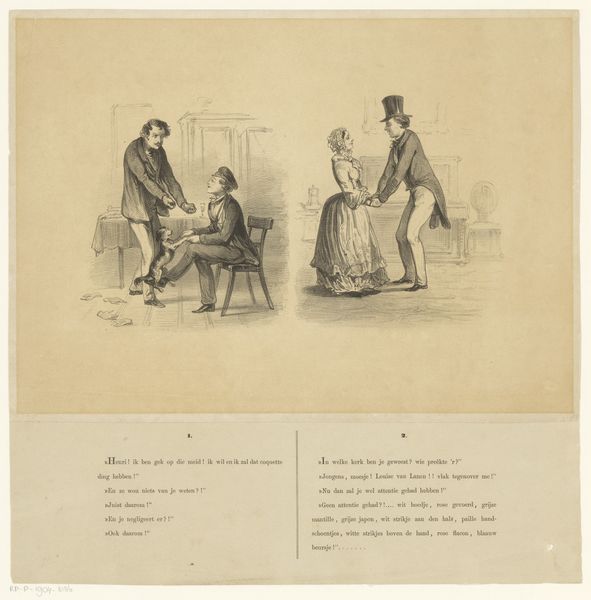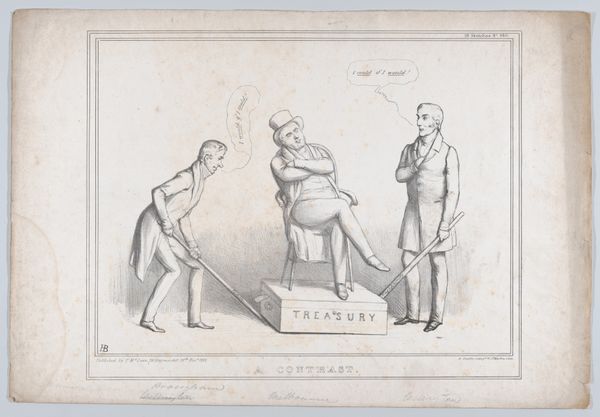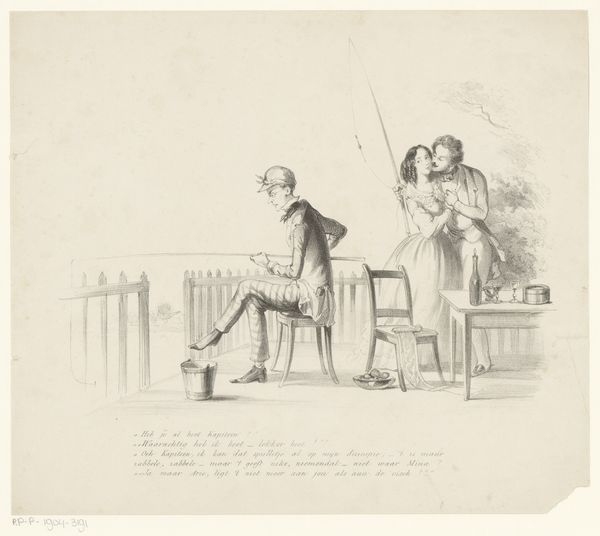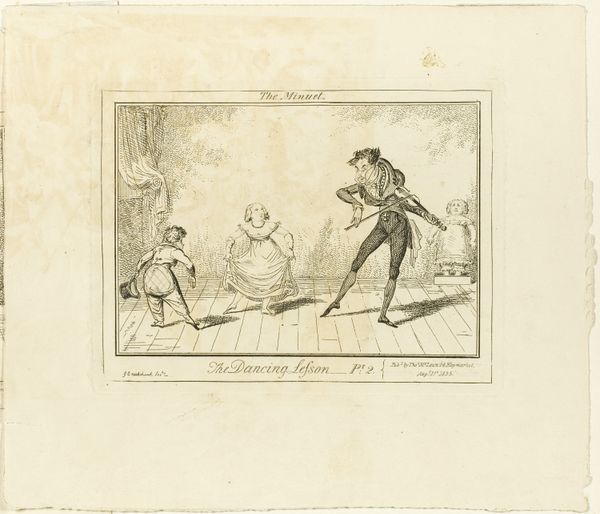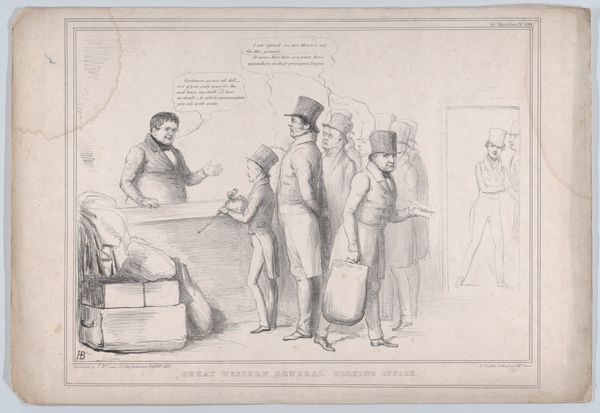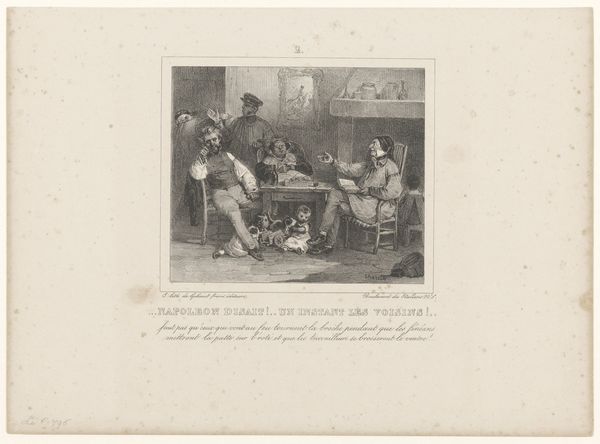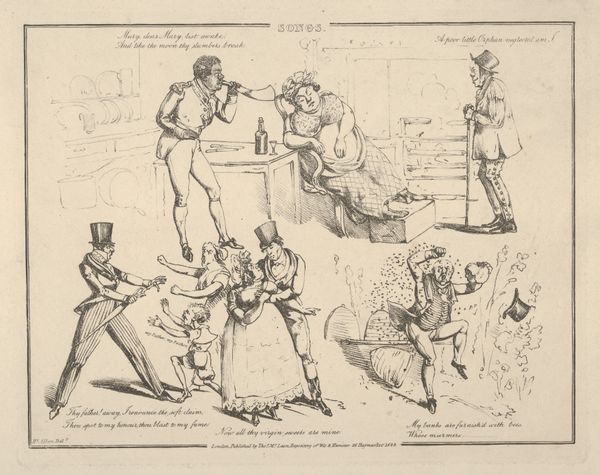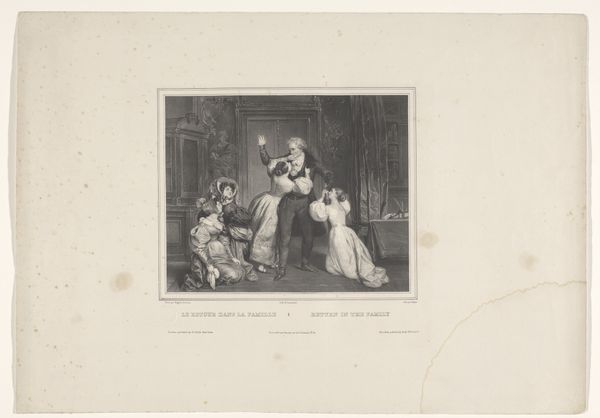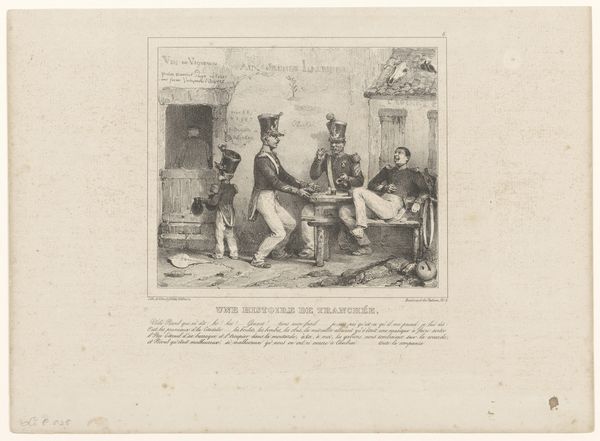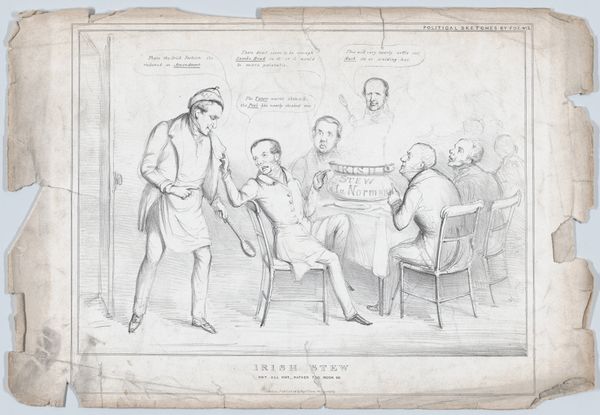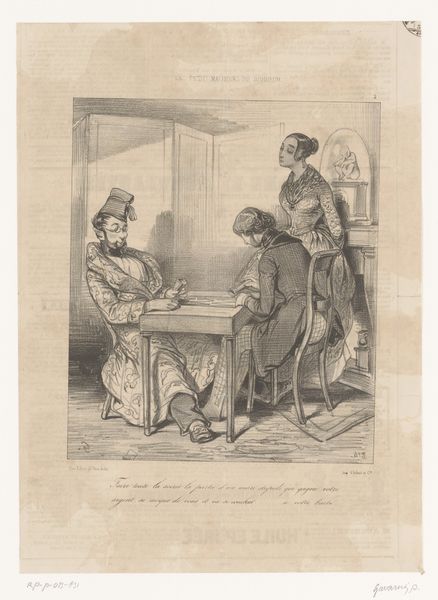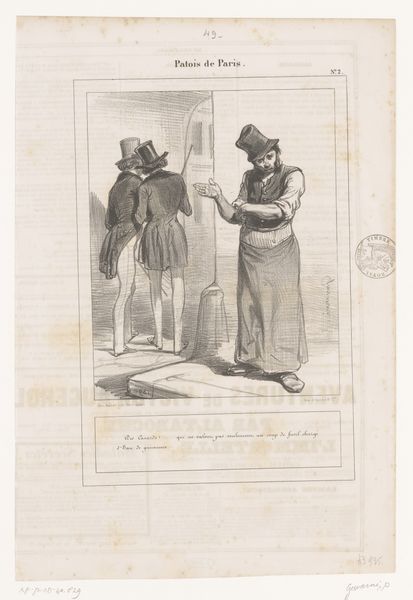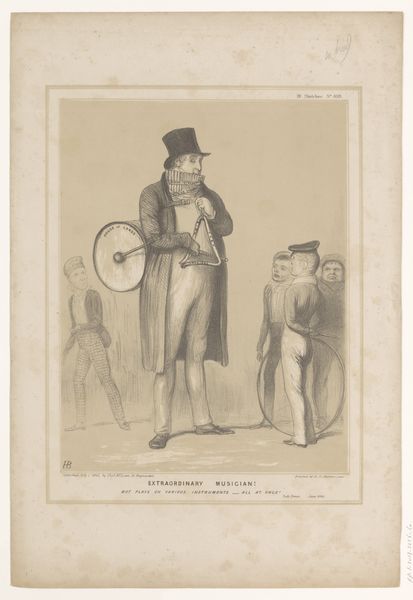
drawing, lithograph, print, pencil, pen
#
portrait
#
drawing
#
lithograph
#
ink paper printed
# print
#
caricature
#
pencil sketch
#
old engraving style
#
romanticism
#
pencil
#
pen
#
genre-painting
Dimensions: height 300 mm, width 445 mm
Copyright: Rijks Museum: Open Domain
Curator: What a wonderful piece! This is a lithograph by John Doyle, possibly dating from 1845 to 1848, titled “Spotprent met Lord Palmerston.” It resides here at the Rijksmuseum. Editor: It’s incredibly understated at first glance, almost a ghostly tableau. The limited tonal range of the lithograph certainly contributes to that sense of hushed anticipation. The main figure dominates the scene, and everyone else seems…translucent? Curator: Yes, the subtleties are key here. Lord Palmerston, a prominent figure of the era, is depicted rather satirically. Doyle, under the pseudonym H.B., created a series of these political caricatures, becoming a visual commentator on British society. The very title, referring to a "great cry and little wool" speaks volumes! Editor: The symbolism, then, acts as a form of amplification. I see Palmerston holding what appears to be a rolled-up document atop a tiny cannon on a table labelled 'British claims paper.' It’s a perfect encapsulation of disproportionate response, this cannon, a phallic stand-in that attempts to disguise impotence or inadequacy. The composition leads my eyes to its focal point and back up to Lord Palmerston again. Curator: Exactly! He's positioned to make a grand show of force, but it’s all a bluff. The other figures in the background further underscore the feeling that the show is only for an audience and carries a specific cultural resonance—the theatrics and overblown rhetoric used in politics. The image functions almost like a meme does today, encapsulating cultural truths through layered symbolism. Editor: The medium itself—the precise, almost clinical rendering of form in lithograph—further contributes to the sense of biting wit. This wasn’t meant to be an emotionally charged work in the Romantic sense, but an astute and intellectually cutting observation on power. Curator: Absolutely. And in that sense, the image carries meaning for us today—even if the specific political figures and circumstances aren’t immediately recognizable. It is a reminder of the power dynamics that often lie beneath surface pronouncements. Editor: Doyle’s keen sense of proportion allows the cartoon to stand as more than political propaganda, but also a lesson in human relations and posturing. Thanks for illuminating this. Curator: My pleasure. It’s pieces like these that allow us to see how little, and how much, things change.
Comments
No comments
Be the first to comment and join the conversation on the ultimate creative platform.

